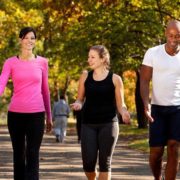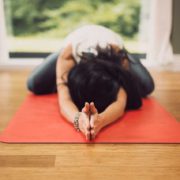The Science of Breathing (Pranayama) and Its Positive Effects on Health
Stress is an inevitable part of life and will always be there, but the overwhelming amount of bad news is causing anxiety levels to skyrocket. How we respond to it is a key factor in maintaining good health.
In this article, I plan to explore healthy ways to live with stress, by focusing on breathing techniques called Pranayama that can help to change our negative response to stress.
What is Allostatic Load?
We have physiological responses to stress that are important for survival. It is only when these responses become chronic that we suffer what is termed allostatic load, leading to an increase in diseases such as heart disease, cancer, stroke, and diabetes. Consider the following process:
- When crises or urgent situations occur, the amygdala, a structure in the brain with an influential role in fear and aggression at the sense of danger, fires to alert the brain to do something;
- The sympathetic nervous system (SNS) is activated; breathing picks up, the heart beats faster, blood rushes away from organs like the digestive tract into the muscles, and we “fight or take flight;”
- If the sense of danger persists then structures in the middle part of the brain (called the Limbic System) such as the hypothalamus & pituitary stimulate the adrenals to pour out cortisol and adrenaline (HPA Axis).
If this system is fired up repeatedly, over time this allostatic load will take a toll on the body.
Today’s stressors are far different than those of the past, even the very recent past. We are living in confusion about what we can and cannot do, the fear of losing our jobs, our health, and the health of a loved one – this on top of the more subtle stressors of everyday life. The result is a heightened and prolonged state of anxiety that needs to be addressed in some way other than constant worry and sleeplessness. We need to explore ways to mitigate the effects of the amygdala and HPA axis, which is involved in the neurobiology of mood disorders and functional illnesses.
Questions? Give Us a Call!
Autonomic Nervous System
The autonomic nervous system (ANS) consists of the sympathetic nervous system (sometimes referred to as the “fight or flight system”) and the parasympathetic nervous system (PNS), which returns us to a relaxed resting state. The PNS is under the control of the vagus nerve. Nerve fibers from the central nervous system go to the organs in the abdomen, thorax, throat area, and to the heart; and fibers from the organs go back into the central nervous system to convey what is going on internally. Nerve fibers send branches into the limbic system of the brain that stimulate or inhibit the stress response. All these structures control internal perceptions, threats, and affective states.
The most advanced part of the vagus nerve is the myelinated vagus, found only in mammals. The myelinated vagus enhances the calming PNS, which slows the heart rate, lowers blood pressure, and repairs, restores, and promotes feelings of safety. The variability of the heart rate is a reflection of PNS activity and can be measured as an indication that the vagus nerve is firing, leading to a calming, resting, restorative state.
Breathing & Respiration
Breathing involves the movement of air in and out of the lungs, and respiration involves a gas exchange between the lungs and the blood. As the diaphragm and the chest muscles contract on inspiration, the diaphragm moves down, the ribs expand and oxygen moves into the lungs. On expiration, the diaphragm and chest muscles relax and carbon dioxide moves out of the body, into the atmosphere.
For the most part, control of the breath is automatic and involuntary. The respiratory center in the brain stem is responsible for breath rate control, and there are receptors in the aorta that detect changes in the blood to regulate the respiratory rate. For example, with exercise, carbon dioxide levels go up, and the receptors in the aorta stimulate the respiratory center to increase the respiratory rate, decrease carbon dioxide and increase oxygenation. However, if breathing is shallow and fast, as is common in the stress response, hyperventilation occurs, which lowers carbon dioxide too much, leading to dizziness, unease, and anxiety.
There are aspects of breathing that we control in a voluntary and conscious manner via the cortex of the brain. Speaking, singing, and playing wind instruments are good examples. Also, stress and emotional stimuli may induce accommodation of breathing as mentioned previously.
Pranayama
Pranayama (yogic breathing) involves the voluntary control of the breath, and is practiced widely in yoga and meditation, but is something that anyone can do. Slow Pranayama appears to shift the autonomic nervous system from the fight or flight sympathetic to the calming parasympathetic state and has been shown to positively affect immune function, hypertension, asthma, and stress-induced psychological disorders. Examples of Pranayama include:
- Ujayi breath – Used during yoga poses, inhaling and exhaling through the nose while creating a slight constriction in the throat;
- 3 part breath (Dirga) – Inhaling and expanding the belly, then the lower rib cage, then upper rib cage;
- Alternate Nostril Breathing (Nadi Shodhana) – Exhaling then inhaling starting with the left side then exhaling and inhaling on the right;
- Bellows Breath (Bhastrika) – Quick thrusts of the belly in on exhalation, which really works the diaphragm. The emphasis on the diaphragmatic breath is important because most people over-utilize chest muscles and don’t get adequate breath, thereby creating shallow breath and inadequate oxygenation.
Medical benefits of Pranayama
There are several studies that show the medical benefits of Pranayama. One study showed improvement in pulmonary function tests in patients with asthma and emphysema after practicing yoga and Pranayama for 45 min a day over the course of two months. Several studies have supported Bhastrika Pranayama in enhancing “parasympathetic tone.” Another study showed the benefits of Alternate Nostril Breathing in increasing parasympathetic tone by measuring heart rate variability and expiration-inhalation ratios. A pilot study with chemotherapy patients showed improvement in mood and sleep after Pranayama, and numerous other studies support the benefits of Pranayama in depression and anxiety.
In sum, Pranayama is accessible to all and can be used with meditation, or on its own, to stimulate the parasympathetic nervous system. This is something we all could use more of, leading us toward greater health and a sense of well-being.
References
C. Collins, “Yoga: Intuition, preventive medicine, and treatment,” Journal of Obstetric, Gynecologic, and Neonatal Nursing (1998): 27 (5) 563-568.
A. Dhruva, C. Miaskowski, D. Abrams, M. Acree, B. Cooper, S. Goodman, and F.M. Hecht, “Yoga breathing for cancer chemotherapy-associated symptoms and quality of life: results of a pilot randomized controlled trial.” Journal of Alternative & Complementary Medicine (May 2012); 18(5):473-9. doi: 10.1089/acm.2011.0555. Epub 2012 Apr 23.
J. Gallego, E. Nsegbe, and E. Durand, “Learning in respiratory control,” Behavior Modification (2001): 25 (4) 495-512.T. Pramanik, H. Sharma, S. Mishra, A. Mishra, R. Prajapati, and S. Singh, “Immediate Effect of slow pace bastrika pranayama on blood pressure and heart rate.” Journal of Alternative & Complementary Medicine (March 2009).
A. Guz, “Brain, breathing and breathlessness,” Respiration Physiology (1997): 109, 197-204.P. Sangupta “Health Impacts Of Yoga & Pranayama; a State of the Art Review,” International Journal of Preventative Medicine (July 2012) Vol. 3 Issue 7, p444.
R. Jerath, J.W. Edry, V.A. Barnes, and V. Jerath, “Physiology of long pranayamic breathing: Neural respiratory elements may provide a mechanism that explains how slow deep breathing shifts the autonomic nervous system,” Medical Hypothesis (2006): 67, 566-571.
G.K. Pal, S. Velkumary, and Madanmohan, “Effect of short-term practice of breathing exercises on autonomic functions in normal human volunteers,” Indian Journal of Medical Research (2004): 120, 115-121.
T. Ritz and W.T. Roth, “Behavioral intervention in asthma,” Behavior Modification (2003): 27 (5), 710-730.
R. Soni, K. Munish, K. Singh, and S. Singh, “Study of the effect of yoga training on diffusion capacity in chronic obstructive pulmonary disease patients: A controlled trial,”International Journal of Yoga (July 2012): 5(2):123-7. doi: 10.4103/0973-6131.98230.
R. Sovik, “The science of breathing – The yogic view,” Progress in Brain Research (2000): 122 (Chapter 34), 491-505.
J. Willmore and D. Costill, Physiology of Sport and Exercise, 3rd ed. (Champaign: Human Kinetics, 2004)
We are here for you, and we want to help.
Our goal is to return you to optimal health as soon as possible. To schedule an appointment please call: 703-532-4892 x2









Leave a Reply
Want to join the discussion?Feel free to contribute!